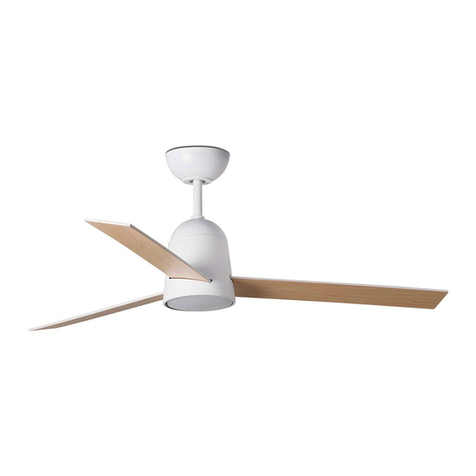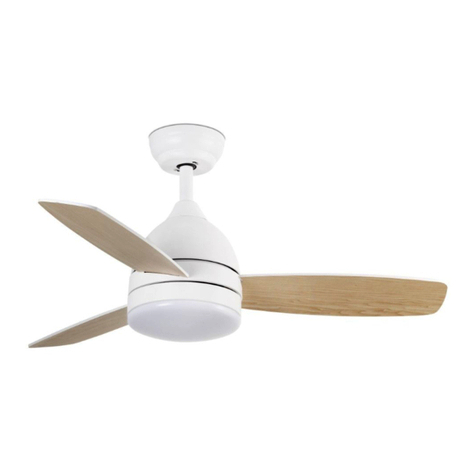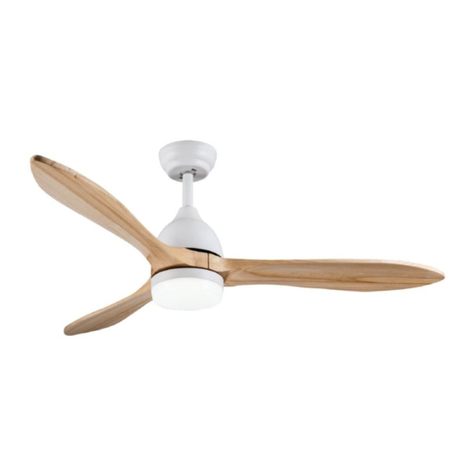
EN. Congratulations on the purchase
of your new Ventyly fan that will pro-
vide you design, quality and comfort
for many years.
We are proud of our work and appre-
ciate the opportunity to provide one of
the best ceiling fans available.
It’s time to start enjoying your Ventyly
ceiling fan!
The manuals contain the complete
instructions for installing and operat-
ing with your fan safely. Remember to
tighten all screws firmly and make all
connections correctly.
FR. Félicitations pour l’achat de votre
nouveau ventilateur Ventyly qui vous
apportera design, qualité et confort
pendant de nombreuses années.
Nous sommes fiers de notre travail
et apprécions l’opportunité de fournir
l’un des meilleurs ventilateurs de
plafond disponibles.
Il est temps de commencer à profi-
ter de votre ventilateur de plafond
Ventyly!
Le manuel d’utilisation contient les
instructions complètes pour installer
et utiliser votre ventilateur en toute
sécurité. N’oubliez pas de serrer
toutes les vis fermement et de faire
toutes les connexions correctement.
ES. Felicidades por la compra de su
nuevo ventilador Ventyly que le pro-
porcionará diseño, calidad y confort
durante muchos años.
Estamos orgullosos de nuestro
trabajo y apreciamos la oportunidad
de suministrarle uno de los mejores
ventiladores de techo disponibles.
¡Toca empezar a disfrutar de su venti-
lador de techo Ventyly!
El manual de contiene las instruccio-
nes completas para instalar y operar
con su ventilador de forma segura.
Recuerde apretar firmemente todos
los tornillos y hacer todas las cone-
xiones correctamente.



































